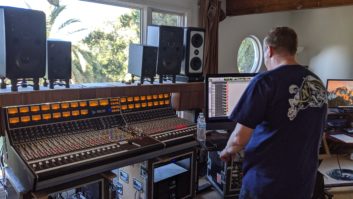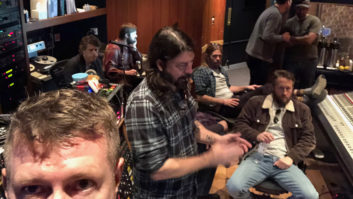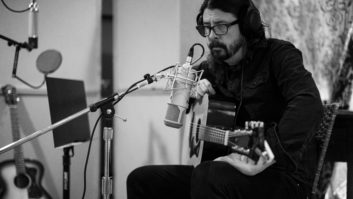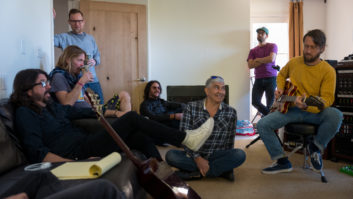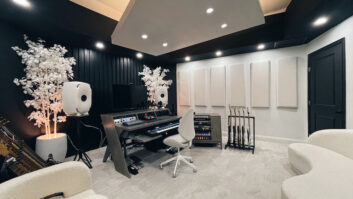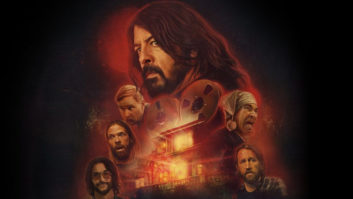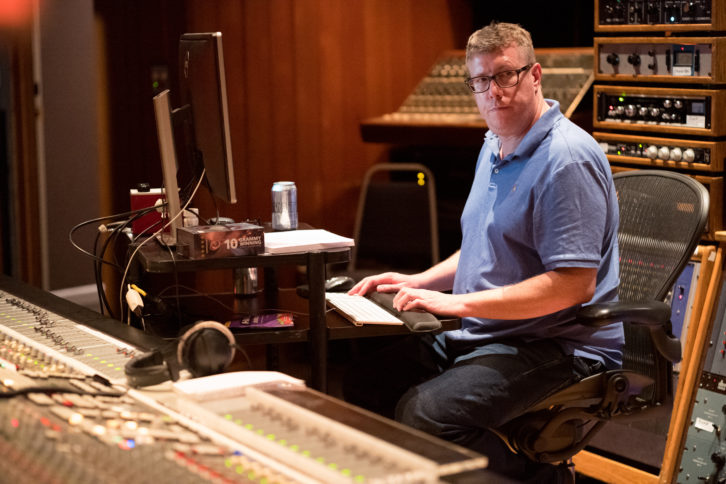
Each day, a new song for Medicine at Midnight was started by first playing together in one or another spot in the house, a “jam room,” in which they would run through the song and figure out parts. The jam room had its own drum kit, and all the players had their amps. “They’d jam the song out and get a vibe for it, and everyone would figure out their parts, where they’d fit into it,” Alex Pasco says. “We’d be upstairs getting ready to track the song. Then the band would come in, we’d have everything dialed in, drums ready, and they’d sit down and start hashing it out.”
Recording Medicine at Midnight, Part 1: Foo Fighters in the House
Recording Medicine at Midnight, Part 2: Setting Up Shop
Recording Medicine at Midnight, Part 3: Miking The Foos
The process differed from that of the previous album, where the band spent a month or two in a rehearsal space doing demo writing sessions, with producer Greg Kurstin and Pasco in attendance. This time around, Grohl first crafted the demos alone, then took full advantage of Kurstin’s and the bandmembers’ creative abilities.
Among the first decisions made before any work could take place was whether the band would be recorded playing together as a group or if the songs would be tracked one instrument at a time.
“That was a big conversation I had with Dave,” lead engineer Darrell Thorp notes. “The Foos work one at a time”—and only one song at a time, working for several days until they felt a song was in a solid enough place to set it aside and begin another— “and new songs were started throughout, not just at the beginning of the sessions.”
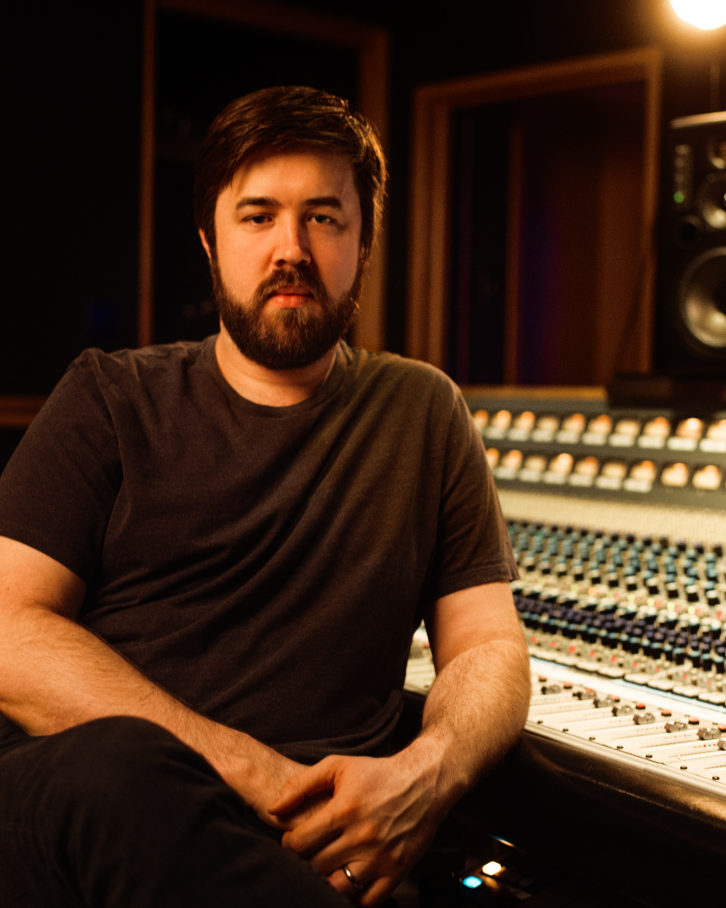
A click track was needed, to which Grohl, followed by Hawkins, would record to. “Sometimes Greg would create different rhythms in Logic,” Pasco explains. For example, at the beginning of “Medicine at Midnight,” one hears a repeating handclap and cowbell. “That was the click track, and it just gives you space to groove around it, instead of the completely vibeless donk-donk-donk in your headphones.”
Adds Kurstin, “You could create a click that breathes.”
When it would come time for Grohl’s lead vocals, his preference, says Thorp, was to record the song in sections. “Because he’s singing in sections, the verse could be a ‘very typical level’ volume, but then the chorus could be loud and screaming,” Thorp explains. “Because he would do a couple passes of the verse, I’d put it together, to make sure we had the first verse. And then he’d say, ‘Okay, let’s do the second verse,’ and then we’d do a couple passes of that. And then, he would go in and start screaming away on the choruses.”
The group did entertain one guest contributor at the house, percussionist Omar Hakim, who showed up with an entire truck full of instruments. “We already had a ton of equipment at this house, and up rolled Drum Doctors with a box truck,” Pasco laughs. “We had a list of songs we wanted to have [Omar] put percussion on. I just had five or six mics set up—a stereo pair and a couple of spot mics—and he would play whatever came to mind.”
Among Hakim’s arsenal was a fascinating electro-acoustic instrument known as an A-Frame. “It’s this weird, random electronic drum, and Omar was infatuated with it,” Pasco says. “It’s a drum, but it’s triggering a sample player inside of it, a whole synth engine.”
